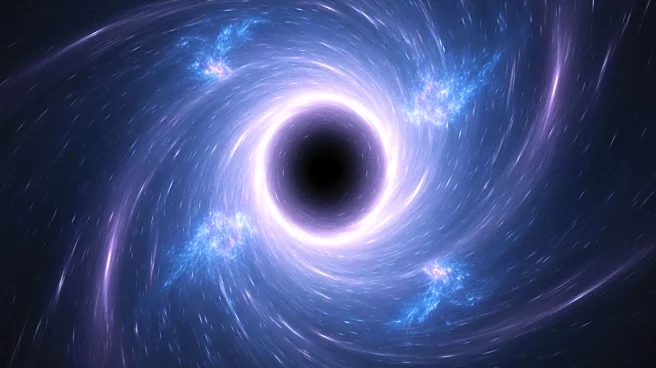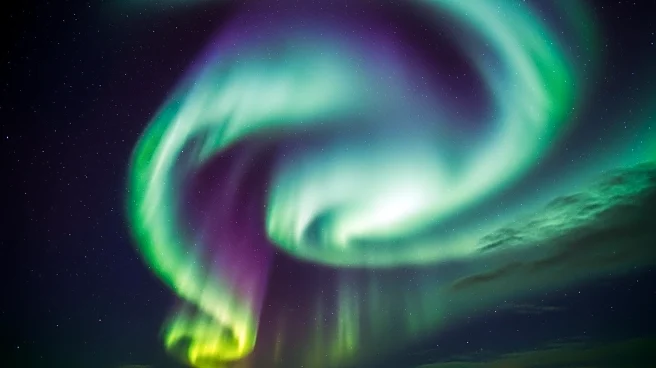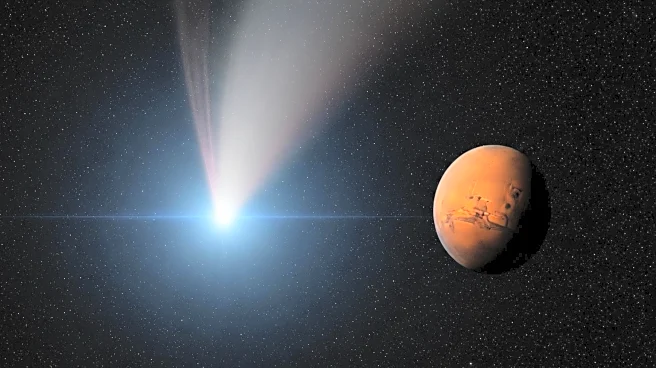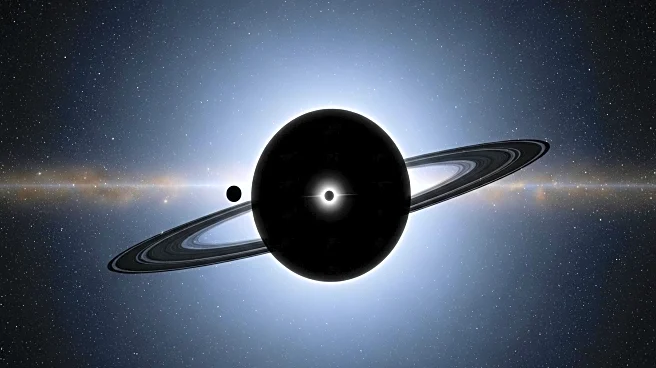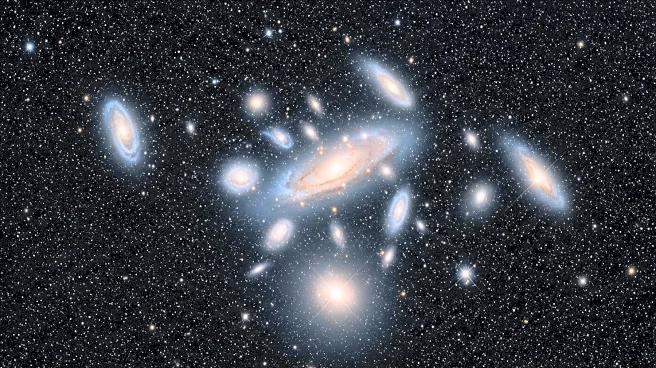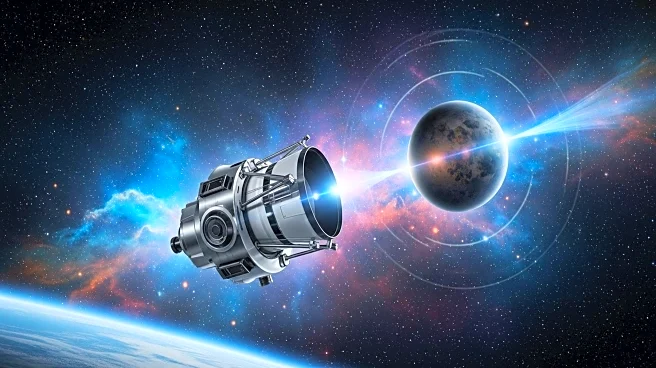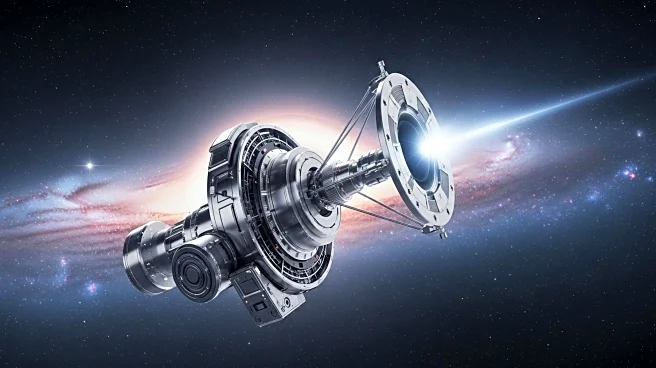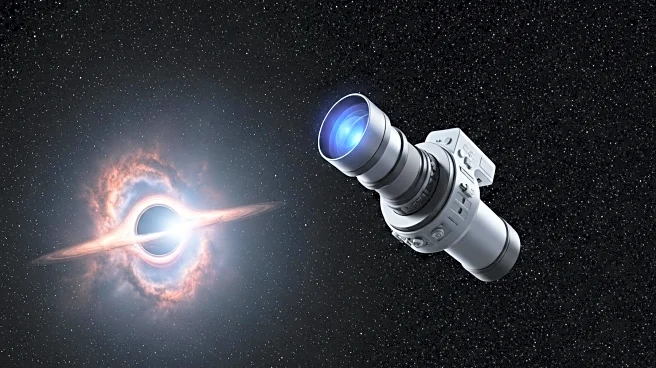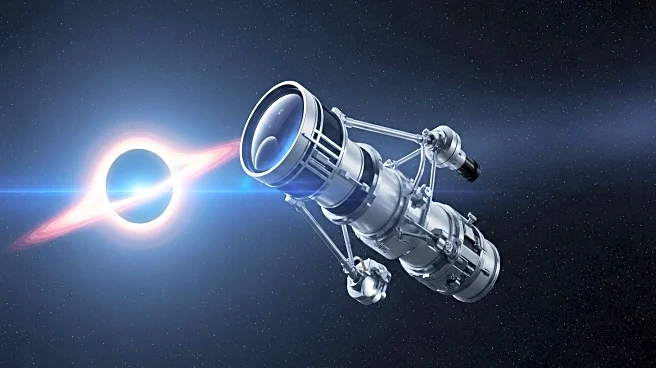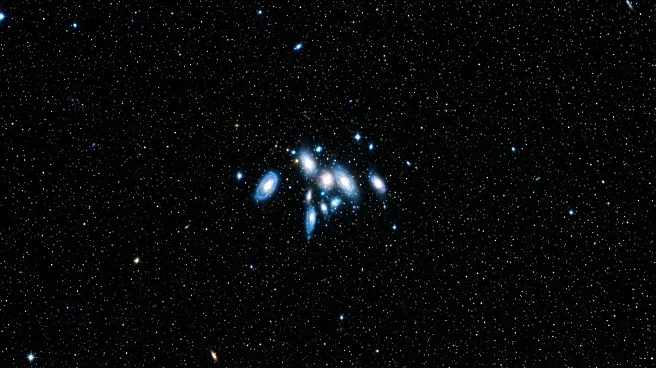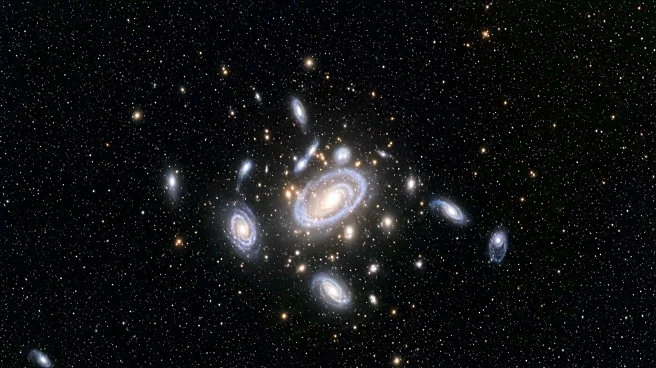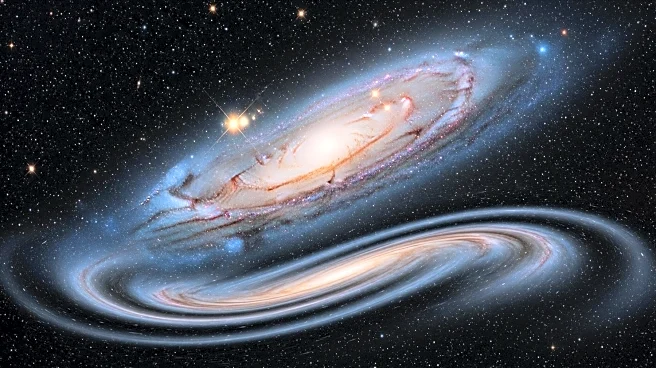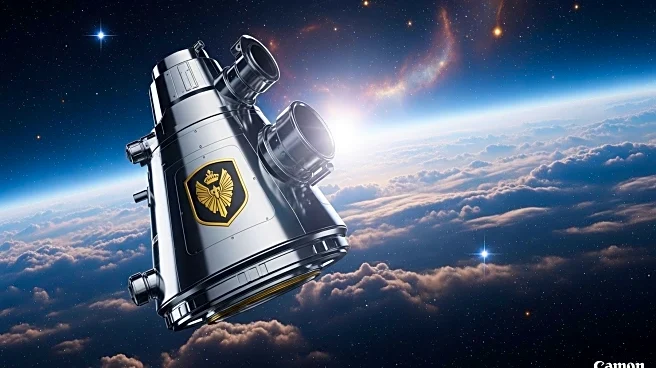What is the story about?
What's Happening?
Researchers from the Norwegian University of Science and Technology (NTNU) have proposed a new explanation for the origin of ultra-high-energy cosmic rays, a mystery that has puzzled scientists since 1962. These cosmic rays, which are not actual rays but small particles like atomic nuclei, are believed to be accelerated to enormous energies by winds from supermassive black holes. The study, led by PhD research fellow Domenik Ehlert and associate professor Foteini Oikonomou, suggests that these winds, which can travel at up to half the speed of light, might be responsible for the high-energy radiation observed. The team’s hypothesis is based on the alignment of conditions related to these winds with particle acceleration, although definitive proof is still lacking.
Why It's Important?
Understanding the source of ultra-high-energy cosmic rays is crucial for advancing knowledge in astroparticle physics, which explores the relationship between the smallest particles and the universe's largest phenomena. If supermassive black holes are indeed responsible, this could reshape current models of cosmic ray origins and influence future research directions. The findings could also have implications for space travel, as cosmic radiation poses a significant risk to astronauts. By identifying the sources of these particles, scientists can better assess and mitigate potential hazards for space missions. Additionally, this research could enhance our understanding of black hole dynamics and their impact on galaxy formation and evolution.
What's Next?
The researchers plan to collaborate with neutrino astronomers to test their hypothesis further. Neutrino experiments could provide additional evidence to support or refute the idea that winds from supermassive black holes are responsible for accelerating cosmic rays. This collaboration could lead to new insights into the mechanisms behind particle acceleration in the universe. As the scientific community continues to explore this hypothesis, further studies may refine or challenge the current understanding, potentially leading to breakthroughs in both theoretical and observational astrophysics.
Beyond the Headlines
The study highlights the complex interplay between cosmic phenomena and particle physics, emphasizing the need for interdisciplinary approaches in scientific research. The potential role of supermassive black holes in generating cosmic rays also raises questions about the broader impact of these celestial objects on the universe. As researchers delve deeper into this mystery, ethical considerations regarding space exploration and the protection of astronauts from cosmic radiation may gain prominence. The findings could also inspire new technologies or strategies for shielding spacecraft and personnel from high-energy particles.
AI Generated Content
Do you find this article useful?
